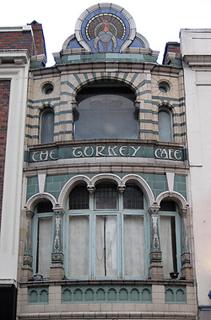Turkeys Part III: Wattle they think of next?
Mjs76
For the third and final part of our journey into turkeyness with PhD student Brooklynne Fothergill, we take a look at the state of turkeys today and also the state of turkey remains. And indeed, the turkeys that remain in the States.
Brooklynne’s PhD research traces the turkey’s journey from America to Europe and back again through the bones that survive on archaeological sites and within museum archives. Ironically, the ancient American material is better documented and preserved; in Europe turkeys had none of the reverence and their bones were simply rubbish, not just to those who had cooked and eaten them but often to the archaeologists who subsequently found them, clearing Renaissance garbage out of the way in order to dig down towards all the interesting Viking and Roman stuff.
But the turkey and its bones have much to tell us about how people lived. The conditions of turkey bones, analysed in the light of current veterinary knowledge, can illuminate how those turkeys were raised and what they were used for within society. Not as commonplace as the chicken or duck, not as exotic as the pea-fowl or guinea-fowl, your man the turkey is a fascinating – and until now, largely unexplored – index of the progress of social development wherever it was found.

The Turkey Cafe, Granby Street, Leicester, designed by Arthur Wakeley in 1901 (image: ChismeCait/Flickr via Creative Commons)
Nowadays, turkey production is automated and turkey meat itself almost as commonplace as chicken (six per cent of all meat sales in the UK) although it still has a special place on the nation’s table at Christmas. Ironically it is the goose, which was all that Bob Cratchitt could afford, which is now considered the more exotic Yuletide roast.
Any supermarket-bought turkey will almost certainly be a ‘BBW’ or Broad Breasted White. Plump but bland, the BBW is to turkeys what Iceberg is to lettuce or Golden Delicious is to apples: hugely popular but scorned by anyone who cares about these things. It is not even recognised as a breed by the American Poultry Association. Short of leg, generous of breast, the poor thing is physically incapable of copulating and exists only through artificial insemination, brought to life by human action like some sort of gallinaceous golem.
Real turkeys – breeds recognised by the APA like the White Holland, the Blue Slate or the Bourbon Red – are rarer, some are even classed as endangered, but the meat they produce has a quality you’ll never get from a factory-farmed BBW.

Barack Obama gives a turkey a 'Presidential Pardon', Thanksgiving 2009 (image: Wikipedia)
Many of these breeds, which originated from hybridisation of wild turkeys with the domestic birds brought over by colonists, are now farmed in Europe. This of course means that their family tree crosses the Atlantic three times – although some specifically European breeds also exist such as the popular (and tasty) Norfolk Black.
From all the preceding information, largely gathered from material supplied by Brooklynne Fothergill from our School of Archaeology and Ancient History, it is clear that there is a great deal more to turkeys than meets the eye (or the palate).
"It was a Turkey! He never could have stood upon his legs, that bird. He would have snapped them short off in a minute, like sticks of sealing-wax.
'Why, it's impossible to carry that to Camden Town,' said Scrooge. 'You must have a cab.'
The chuckle with which he said this, and the chuckle with which he paid for the Turkey, and the chuckle with which he paid for the cab, and the chuckle with which he recompensed the boy, were only to be exceeded by the chuckle with which he sat down breathless in his chair again, and chuckled till he cried."
Charles Dickens, A Christmas Carol, 1843
Brooklynne’s PhD into the palaeopathology of turkey remains is the first time that anyone has documented the combination of health and disease within a domestic animal across centuries of history and intercontinental migration.
It is also the first systematic analysis of disease within the bones of a North American species. And it has an enormous amount to tell us about ancient American civilisations, European expansionism, social strata within Renaissance Europe, changing attitudes towards animal husbandry and numerous other areas of history, science and sociology.
Enjoy your Christmas dinner but, before you throw away the gravy-stained bones, stop for a moment and consider: what could the University of Leicester do with this?